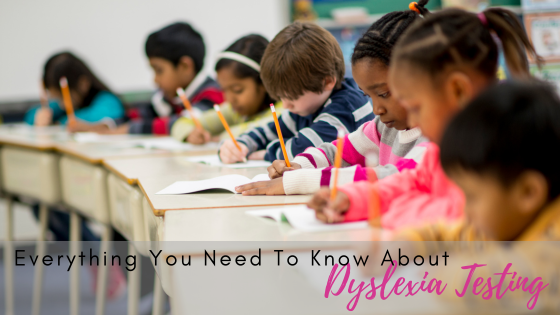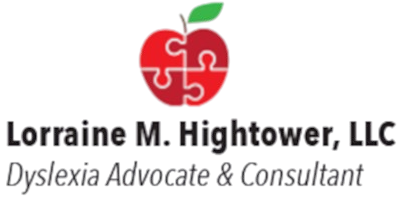
Everything You Need To Know About Dyslexia Testing
Maybe a classroom teacher has mentioned some concerns to you about your child’s reading skills. Or perhaps you’ve suspected that your student struggles with comprehension. Maybe you notice that your child avoids reading aloud. If you’re concerned about your child possibly having a specific learning disability, the best thing you can do is start with a clear diagnosis. Dyslexia testing is a way to effectively identify the source of the academic problems your child may be facing. A thorough evaluation of your child can also help to rule out other causes of his or her reading difficulties. Before you begin this process, it is helpful to understand what comprehensive dyslexia testing might entail. Knowing what kind of solutions are available to help your child once they receive a definitive diagnosis is beneficial. Read on to learn everything you need to know about dyslexia testing.
The importance of an effective evaluation: Dyslexia testing can help to build a road map for a student’s future. Not only can a diagnosis offer clarity, it can also help develop some intervention planning. In addition, a diagnosis can provide official documentation of your student’s learning disability; this can help with establishing eligibility for special services or academic accommodations.
The right time: Don’t wait too long before getting a diagnosis. Early screenings can take place as soon as pre-kindergarten and kindergarten. While these earlier tests may not provide an official dyslexia diagnosis, they can point to areas of concern. By mid-first grade, if you have a child struggling with reading, it is recommended that your student has an evaluation done by a qualified professional. Early interventions can genuinely help improve a student’s chances for academic success. However, it is key to note that it is never too late to be evaluated for dyslexia.
A gathering of information: Dyslexia testing often includes a process that collects data from different areas of a student’s life. Parents and teachers may need to provide background information for the evaluation that details the developmental and educational experiences of the child. A family history of dyslexia can be a crucial piece of information to include. Teacher observations can represent important data that help to paint the picture of what kind of learner your child is.
Put it to the test: Norm-referenced testing is age and grade-level appropriate. In addition to background information, assessments may include a hearing screening to rule out hearing problems. While tests may vary, certain areas will help to determine a dyslexia diagnosis. These include language, phonological awareness, fluency, comprehension, spelling, and writing.
Benefits of having a dyslexia diagnosis: Some of the brightest minds throughout history have been diagnosed with dyslexia. A diagnosis can allow for interventions, tailored education plans, improved emotional well-being, improved language skills, and the potential for long-term success.
Take action as a parent: If you’re considering dyslexia testing for your child, start with observing and documenting details about your child’s reading and writing abilities. Note strengths and weaknesses using specific examples. Be sure to communicate with your child’s teachers to share your concerns and gain some insights into your child’s academic picture. Reach out to a specialist who can help you with dyslexia evaluations; these are often educational psychologists who will administer a comprehensive assessment or the school can complete the testing. Under federal law, you have the right to an evaluation if you request it. After dyslexia testing, once you have a diagnosis, you can follow up with a plan for supporting your child both in and out of the classroom.
Discover dyslexia therapy: Once you set out to seek help for your student with dyslexia, you may find that multisensory techniques and tailored support will make a significant difference in your child’s life. Dyslexia therapy with Dyslexia on Demand aims to unlock your child’s full potential. Through the power of Orton-Gillingham based dyslexia programs, your student will work with a Certified Academic Language Therapist to face academic challenges. This virtual program allows for greater scheduling flexibility, leading to student consistency — which is so important in therapy in order to build their new neural networks.
Learn more about Dyslexia on Demand: Once your child has a diagnosis after dyslexia testing, it can be so easy to get overwhelmed by all of the choices available for dyslexia help. Dyslexia therapy emerges as a most effective solution; it offers long-lasting solutions alongside a holistic approach. Sessions are individualized, taking place one-on-one with the same therapist. The curriculum comes from trusted, evidence-based language interventions, and long-term goals of dyslexia therapy include not only academic success but improved self-confidence and motivation. Dyslexia on Demand nurtures responsibility, independence, and self-advocacy in its students with a program that features steady, personalized progress.
Reach out to Dyslexia on Demand: Are you ready for the best solution for dyslexia help? Request more information or get in touch with Dyslexia on Demand to get the best help for your student.
References
International Dyslexia Association. (2017). Definition of dyslexia. International Dyslexia Association. https://dyslexiaida.org/definition-of-dyslexia/
International Dyslexia Association. (2017). Evaluating children for dyslexia. International Dyslexia Association. https://dyslexiaida.org/evaluating-children-for-dyslexia/
American Academy of Pediatrics. (2019). Clinical report: Dyslexia. Pediatrics, 144(6), e20193046. https://doi.org/10.1542/peds.2019-3046
National Center on Improving Literacy. (2020). Dyslexia: What families need to know. University of Oregon. https://improvingliteracy.org/fact-sheet/dyslexia-what-families-need-know
Shaywitz, S. E., & Shaywitz, B. A. (2020). Overcoming dyslexia: Second edition. Vintage.
Snowling, M. J., & Hulme, C. (2011). Evidence-based interventions for reading and language difficulties: Creating a virtuous circle. British Journal of Educational Psychology, 81(1), 1–23. https://doi.org/10.1111/j.2044-8279.2010.02014.x
Wagner, R. K., Torgesen, J. K., & Rashotte, C. A. (1999). Comprehensive Test of Phonological Processing (CTOPP). PRO-ED.
Woodcock, R. W. (2011). Woodcock Reading Mastery Tests, Third Edition (WRMT-III). Pearson.












